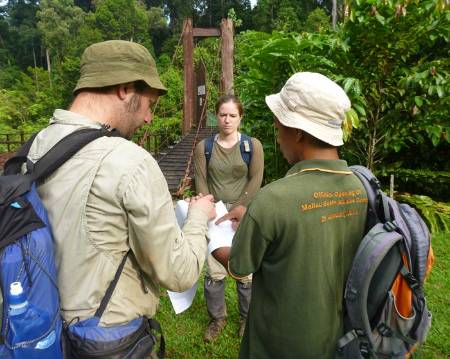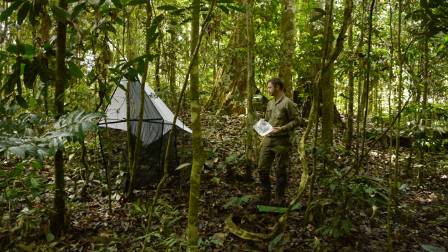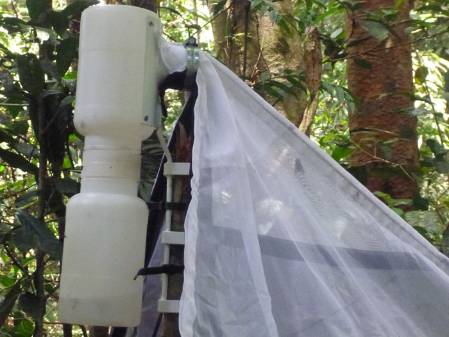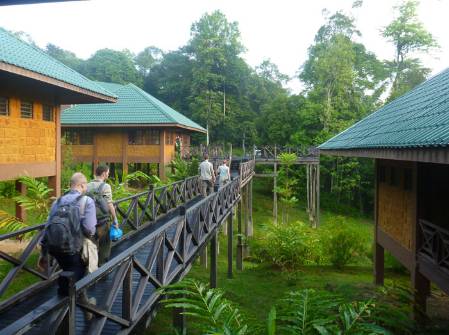I was back out into the rainforest today with Dan and the team. It was a particularly long, sweaty and gruelling trek to their newest sampling site. We enlisted a local guide to help us find the quickest and easiest route there, but it still involved a lot of slipping and sliding up and down several ridges before we got there.
Dan and our local guide discuss the best way to get to today’s sampling site.
Dan and the others are studying the invertebrates and lichens at 8 different sites within the lowland Dipterocarp rainforest here in Maliau. At each site, Dan, Kerry and Keiron carry out 6 different sampling methods, in order to collect as many different flying, crawling and wriggling invertebrates as possible. This should give them a really good understanding of exactly what is living here.
Dan with a Malaise Trap in the rainforest.
As well as the Pitfall traps that I showed you yesterday, the team also use Malaise traps and SLAM traps. These look a little bit like modified tents, and are used to catch aerial (flying) insects.
Dan explains how Malaise traps and SLAM traps work.
A SLAM trap hanging in the air, having been hoisted up with the aid of a tennis ball and some rope.
The Malaise and SLAM traps stay up for three days before the team return to the site to collect them. We’ll wait and see whether today’s traps have been successful….
Look closely and you can see an insect has already flown into this Malaise trap.
Back at the Studies Centre, having survived the walk back through thick undergrowth and over several fallen trees, I was feeling pretty smug that I had yet to experience a leech bite in Borneo. On arrival in Maliau several days ago, Tony and I had been greeted with numerous tales of engorged leeches and bloodied clothing from various members of the team. But the worst leechy story was Keiron’s (one of Dan’s volunteer Research Assistants). Having eaten an orange for lunch, some of the fruit appeared to have got trapped between his teeth. He dug around inside his mouth and pulled it out, only to discover it wasn’t a bit of orange between his teeth, it was a leech! To this day no-one is quite sure how it got there (perhaps it was hanging around on the mouth piece of his water bottle) but it was the last thing Keiron expected to find between his molars!
So it was with a mixture of annoyance and a slight sense of respect that I discovered a VERY fat leech attached to my shoulder today.
A well-fed leech!
Having ‘liberated’ the leech and detached it from my skin, the wound continued to bleed for some time. The anti-coagulant that leeches use to stop your blood from clotting and ensure a free-flowing meal is clearly very effective!










